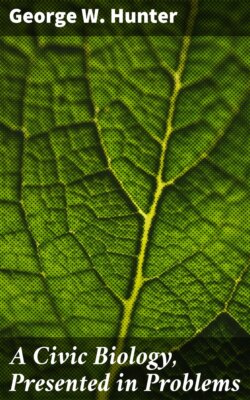Читать книгу A Civic Biology, Presented in Problems - George W. Hunter - Страница 9
На сайте Литреса книга снята с продажи.
IV. THE FUNCTIONS AND COMPOSITION OF LIVING THINGS
ОглавлениеTable of Contents
Problems.—To discover the functions of living matter.
(a) In a living plant.
(b) In a living animal.
Laboratory Suggestions
Laboratory study of a living plant.—Any whole plant may be used; a weed is preferable.
Laboratory demonstration or home study.—The functions of a living animal.
Demonstration.—The growth of pollen tubes.
Laboratory exercise.—The growth of the mature ovary into the fruit, e.g. bean or pea pod.
A Living Plant and a Living Animal Compared.—A walk into the fields or any vacant lot on a day in the early fall will give us first-hand acquaintance with many common plants which, because of their ability to grow under somewhat unfavorable conditions, are called weeds. Such plants—the dandelion, butter and eggs, the shepherd's purse—are particularly well fitted by nature to produce many of their kind, and by this means drive out other plants which cannot do this so well. On these or other plants we find feeding several kinds of animals, usually insects.
If we attempt to compare, for example, a grasshopper with the plant on which it feeds, we see several points of likeness and difference at once. Both plant and insect are made up of parts, each of which, as the stem of the plant or the leg of the insect, appears to be distinct, but which is a part of the whole living plant or animal. Each part of the living plant or animal which has a separate work to do is called an organ. Thus plants and animals are spoken of as living organisms.
